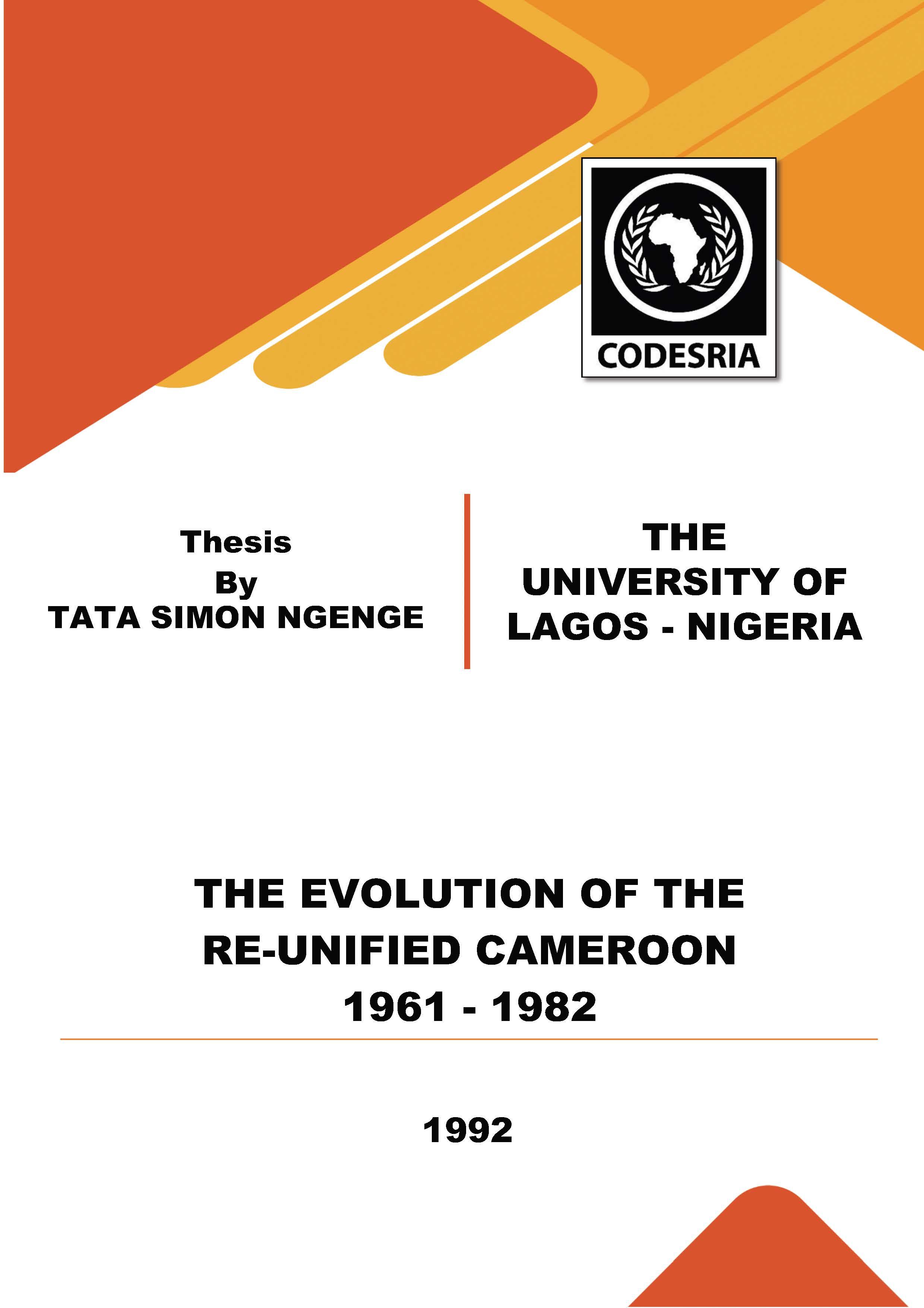THE EVOLUTION OF THE RE-UNIFIED CAMEROON 1961 - 1982
Keywords:
EVOLUTION, RE-UNIFIED CAMEROONSynopsis
The reunited Cameroon came into being on October 1, 1961, the day former British Southern Cameroons reunited in a federation with French Cameroun, after 45 years of Anglo-French partition of German Kamerun. The study traces the historical background of the idea of reunification in British and French Cameroons; the role the partitioned ethnie groups played and their reaction to colonial rule that promoted their wishes for independence and reunification.
As bath sectors evolved, differences emerged among the nationalists of each camp in the 1950s. In Southern British Cameroons Dr. E. M. L. Endeley who ini tiated the idea of reunif ication backed out of the idea supporting thereafter integration into Nigeria as a separate region. Most of his followers, particularly Dr. J. N. Foncha and Bobe A. N. Jua disagreed with him and thus broke away from his Kamerun National Congress (KNC) and formed the Kamerun National Democratic Party (KNDP) in 1955, that piloted Southern cameroons into union with French Cameroon on October 1, 1961. On the other hand in French Cameroun early-'nationalists were neither enthusiastic about inde'pendence nor reunif ication. The poli tical · parties and politiccil groups that emerged before 1948 were organised by France to promote her colonial interest. The uniori des Populations du Cameroun (UPC) formed in 1948 became the first indigenous political party in French Cameroun that stood for independence and immediate reunification of the partitioned Trust Territory. Unfortunately the French did not like the UPC radical approach to attain these goals and it was banned in 1955. Its leaders Dr. Felix Moumie ( President) and Reuben Um Nyombe (Secretary General) were murdered by the French. French Cameroun finally became independent in 1960 with Ahmadou Ahidjo as
President. Ahmadou Ahidjo unlike his predecessor Andre-Marie Mbida favoured reunification. Preliminary talks were held between him and Dr. J. N. Foncha before the February 11, 1961 plebiscite.
When Southern Cameroon voted "yes" for the reunification option, talks continued between the two men that culminated in the Foumban Constitutional Conference in July, 1961. At Foumban, the Federal system of government was adopted very much to Ahidjo's dislike. Ahmadou Ahidjo became president of the reunited Cameroon and Dr. J. N. Foncha the vice president. Ahidjo after succeeding in causing division in the KNDP camp, was able to institute the one party system in 1966. This gave him direct control over West Cameroon. Perceiving that Foncha would not accept the idea of a unitary system he brought in S. T. Muna and dropped Foncha in 1970. Wi th Muna the uni tary system was realised in 1972, that marked the end of Western Cameroon's autonomy.
The uni tary system in the name of "we are one" brought the minori ty anglophone linguistic group untold misery. They lost
their constitutional rights, political position in the union, all development concentrated in the French sector and they became treated as a conquered people. In misery, anglophones point to the February 11, 1961 plebiscite and accuse their leaders of
being weak and self centred. The economic development and power sharing propagated by the reunificationists during the plebiscite campaign became a dream. Co-existence in the union, therefore, is on the. moral basis that the constituent uni ts were once indivisible. The francophone being in a majority are bent on assimilating and absorption of anglophones rather than building a harmonised unique bicultural nation.
This therefore has put reunification in strain and to a serious question whether the Cameroon Union of two different colonial
legacies can serve as an example of state integration to forma united Africa.
Downloads






